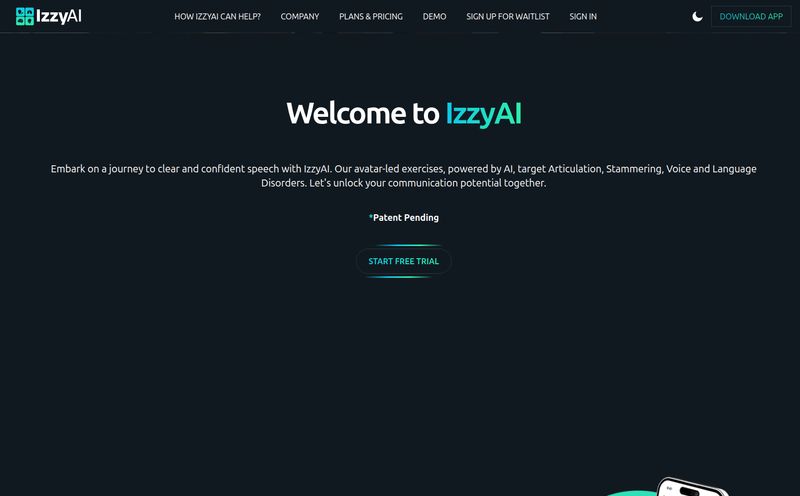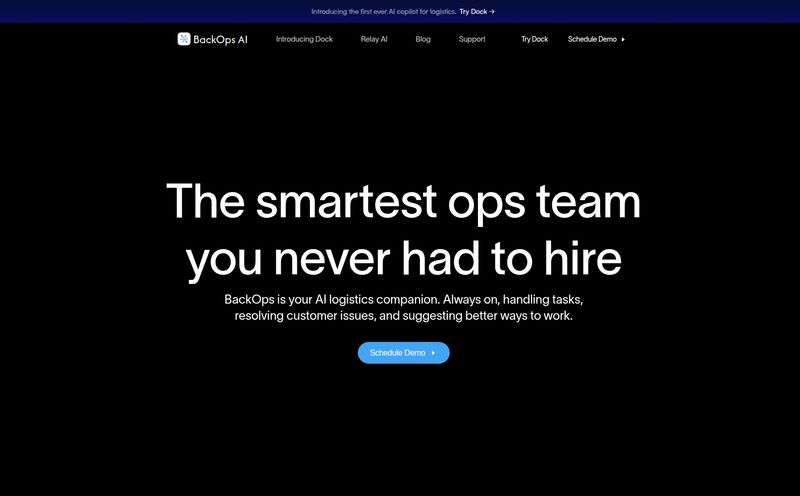I’ve been in this game for a while. Long enough to remember when “version control” meant a shared network drive and a prayer. I’m talking about folders named project_final_v2_USE_THIS_ONE.zip. If you just shuddered, you’re my people. Then along came Git, which was revolutionary, and hot on its heels, GitHub, which put a friendly face on it and turned solo coding into a team sport.
For years, GitHub has been the undisputed king. The default. The place you point new hires to on their first day. It's so ingrained in our workflows that we barely even think about it. But in the fast-paced world of tech, being the king doesn’t guarantee the crown forever. So, I decided to take a step back, look at it with fresh eyes—as a developer, a project lead, and an SEO guy who lives and breathes this stuff—and ask the big question: Is GitHub still the best all-in-one platform for building software today?
What Exactly Is GitHub Anway? A Quick Refresher
If you're new here, let's get the basics out of the way. At its heart, GitHub is a home for your code, built around the Git version control system. Think of it as Google Docs for code. It lets you and your team work on the same projects, see a full history of every single change, and merge your work together without wanting to tear your hair out.
But that's the 2015 definition. Today, GitHub is so much more. It's a project management suite. It's an automation powerhouse. It's a security scanner. It’s a complete ecosystem where software gets planned, built, tested, and deployed. You see giants like Stripe, Duolingo, and Mercedes-Benz using it, not just for a public-facing open-source project, but for their core, mission-critical software. It’s the central nervous system for modern development teams.
The Core Features That Actually Matter
You can read the marketing brochure anytime. Let’s talk about the features that I, and probably you, will actually use day in and day out.
Code, Collaborate, and Conquer
This is GitHub's bread and butter. The pull request (PR) is still one of the best collaboration inventions in software history, period. The ability to propose changes, have a conversation right next to the code, request reviews, and see a clear, auditable trail is chef's kiss. It’s a system that just works. This social coding aspect is what transformed Git from a powerful-but-complex tool into the community hub it is today.
The Rise of Automation with GitHub Actions
If PRs were the first revolution, GitHub Actions was the second. This is their built-in CI/CD (Continuous Integration/Continuous Deployment) tool, and honestly, it’s a game-changer. In the past, setting up an automated build-and-test pipeline was a massive pain. You needed a separate service like Jenkins or CircleCI, and it often required a dedicated person to maintain it.
GitHub Actions brought that power right into your repository. It's like having a tiny, obedient robot army waiting to spring into action. Push some code? The robots run your tests. Merge a PR to the main branch? The robots deploy it to your server. I have a simple Action on my personal blog that automatically optimizes my images and deploys the site whenever I push a new article. It saves me about 20 minutes per post. It’s brilliant.

Visit Vocode
Is GitHub Projects the Trello-Killer?
Okay, here’s where my opinion might get a little spicy. GitHub has been pushing its own project management tools—Issues and Projects—hard. And they're... good! The integration is obviously flawless. You can link PRs directly to tasks, and your Kanban board updates automatically as code gets merged. For small, purely developer-focused teams, its a great, streamlined option.
But a Trello or Jira killer? Not quite, in my experience. I've tried to move my team's full project management to GitHub Projects a couple of times. Each time, we've drifted back to our dedicated tools. The interface can feel a bit rigid, and it lacks some of the power-user features and integrations that non-technical team members (like designers or marketers) rely on. It’s close, but not there yet for me.
Let's Talk Money: Breaking Down GitHub's Pricing
Alright, let's get down to the brass tacks. How much is all this going to cost you? GitHub's pricing model is actually one of its strongest points, with a clear path from a free hobbyist account to a massive enterprise.
| Plan | Price | Best For |
|---|---|---|
| Free | $0 / user / month | Individuals, students, and open-source projects. You get unlimited public/private repos and 2,000 CI/CD minutes. |
| Team | $4 / user / month | Small to medium-sized teams needing advanced collaboration tools like protected branches and code owners. |
| Enterprise | $21 / user / month | Large organizations that need serious security, compliance (SOC, FedRAMP), and advanced auditing features. |
The free tier is ridiculously generous. Unlimited private repositories used to be a paid feature, and them making it free a few years back was a huge move. For most individuals and small projects, you may never need to pay a dime. The jump to the Team plan is incredibly reasonable for the features you get. Protected branches alone are worth the price of admission—they're the safety net that stops a well-meaning junior dev from accidentally deploying to production on a Friday afternoon. We've all been there.
The AI Elephant in the Room: GitHub Copilot
We can't talk about modern GitHub without talking about Copilot. For a monthly fee, you get an AI pair programmer that lives in your code editor. It suggests single lines, entire functions, and even helps you write documentation. It's probably the most-hyped developer tool of the last five years.
So, is it worth it? My take: yes, but with a big asterisk. Copilot is an unbelievable productivity booster. It takes care of the boring boilerplate code, remembers complex syntax for you, and sometimes suggests a solution that is genuinely clever. It's like having a senior dev looking over your shoulder (a very, very fast one). However, it can make you a lazy coder. If you just accept its suggestions without understanding them, you're not learning, you're just typing. It's an incredible tool, but it's not a replacement for critical thinking.
The Not-So-Great Parts (Because Nothing's Perfect)
No tool is perfect, and it would be dishonest to pretend GitHub is. First, the interface can be a bit... much. For a complete beginner, landing on a busy repository page can feel overwhelming. There are tabs, sidebars, and menus everywhere.
Second, as I mentioned, the project management tools are still a work in progress for cross-functional teams. And lastly, there’s the quiet fear of vendor lock-in. The more you lean into the ecosystem—using Actions, Packages, Projects—the harder it becomes to ever leave. It's a strategic move by Microsoft, and a smart one, but something to be aware of.
My Final Verdict: Is GitHub Worth It in 2024?
So, we come back to the original question. Is GitHub still the king? In my book, yes. A resounding yes.
While competitors like GitLab and Bitbucket have their own strengths (GitLab’s all-in-one DevOps approach is particularly strong), the sheer momentum, community, and cutting-edge features of GitHub are hard to beat. The combination of a world-class code repository, a powerful and accessible CI/CD system, and industry-leading AI tools in Copilot makes for a package that's tough to top. The generous free plan makes it a no-brainer for individuals, and the affordable team plan provides immense value for growing businesses.
It’s not just a code host anymore. It's the platform where software is born.
Frequently Asked Questions about GitHub
What's the difference between Git and GitHub?
Think of it this way: Git is the engine, and GitHub is the car. Git is the open-source version control software that runs on your machine to track changes. GitHub is a web-based service that hosts your Git repositories and adds a ton of features on top of it, like collaboration, project management, and automation.
Is GitHub only for coders?
Primarily, yes. Its main audience is software developers. However, writers have used it to version control books, designers use it to store assets, and project managers use it to track tasks. Its project management features are making it increasingly useful for non-technical team members involved in a software project.
Can I use GitHub for private projects for free?
Yes! This is one of the best things about the platform. The free plan includes unlimited private repositories for you and your collaborators. You only need to move to a paid plan when you need advanced team-based features like protected branches.
How does GitHub pricing compare to GitLab or Bitbucket?
They are all pretty competitive, but with different philosophies. GitHub's strength is its fantastic free tier and ecosystem. GitLab often bundles more DevOps features into its core product at each tier. Bitbucket has excellent integration with other Atlassian products like Jira and Confluence. The best choice often depends on your team's specific needs and existing toolset.
Is GitHub Copilot safe to use for commercial projects?
This is a hot topic. GitHub states that the code Copilot generates is yours to use. However, because it's trained on a massive amount of public code, there's a small theoretical risk it could reproduce code with a restrictive license. Most companies have accepted the risk for the productivity gains, but it's a good idea to have your legal team review the terms if you work in a highly regulated industry.
Wrapping It Up
GitHub has successfully evolved from a simple code host to the central hub for software development. It has its quirks and isn't perfect for every single use case, but for the vast majority of developers and teams out there, it remains the gold standard. It’s managed to stay relevant, innovative, and frankly, indispensable. Now if you'll excuse me, I have an Action to go write.



